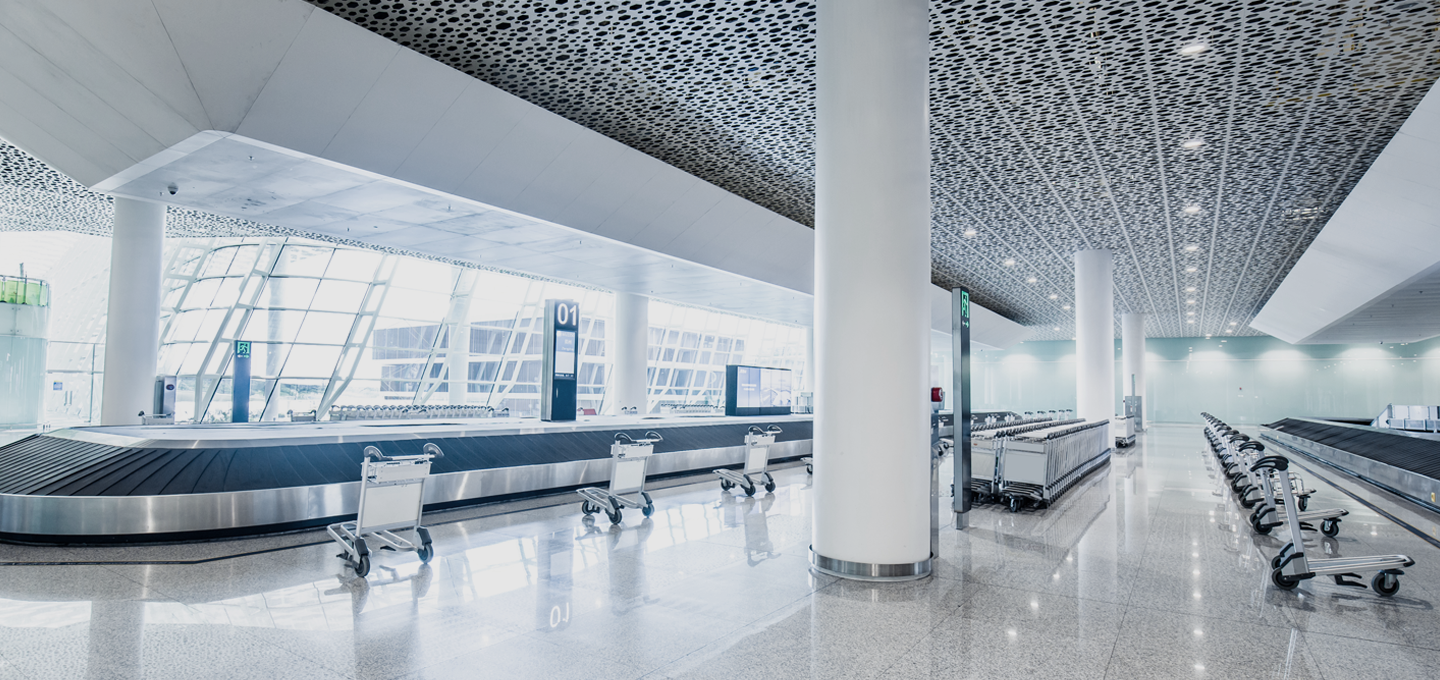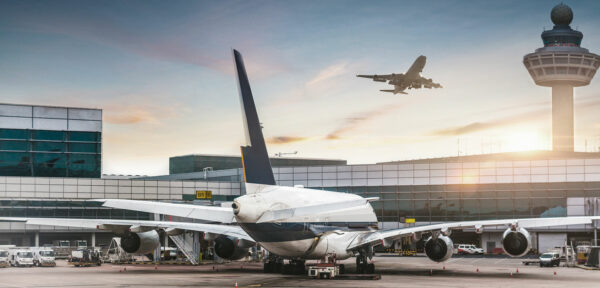2020 was a challenging year for aviation. Travel bans and the public concern over catching the Coronavirus resulted in a sharp decline in passenger traffic. Airports had to suspend a significant part of their operations, following financial and capacity constraints. One year later, with vaccines being deployed globally, the outlook for the industry appears more positive. Passenger numbers in 2021 are forecast to improve 50.4% compared to 2020, and 50.6% of 2019 levels. Moreover, experts predict air travel could start picking up this summer. This and the increasing growth of the airfreight market may indicate that it is time to prepare for the ramp-up. Leveraging technology at airports can help to make processes more efficient and agile. But how can airports embrace innovation amid limited budgets?
Tips to cost-efficiently implement technology at airports
Complying with safety regulations poses a series of challenges for airports. Measures like social distancing during check-in may require managers to plan for additional resources. But restrictions in capacity could lead to extended processing times and delays. More than ever, the airport experience must make room for solutions to reduce touchpoints, avoid congestion and enhance cleanliness. These four tips can be helpful for decision makers to successfully implement technology at airports:
1. Identify which tools can meet your operational needs
The first step for a successful implementation of technology at airports is to find out which solutions can help to address critical operations. To facilitate this evaluation, managers can ask themselves:
- What problem are we trying to solve?
- How long is this solution expected to be effective?
- What is the cost of future upgrades?
- What training will be necessary for airport personnel to familiarize themselves with the new technology?
We can take, as an example, the deboarding process. Traditional planning methods enable decision makers to assign buses and drivers to take travelers from certain flight to the terminal. However, the pandemic urges managers to readapt the planning process since:
- The current volatility is now amplifying accuracy gaps between plans and what is really delivered on the day of operations.
- New variables come into play: enforcing social distancing means that buses cannot be used at their full capacity.
If plans are not adjusted to the operating context, airports will run into inefficiencies and costly delays. Working with real-time input provides as much insight as possible, as the day of operation grows closer. The solution is advanced data science that facilitates tactical adjustments to plans on the go. Once the requirement has been determined, decision makers can analyze the technological options. In this case, they can assess what software improvement will be more suitable depending on the operational environment.
2. Create an implementation plan
Limited budgets challenge operators to invest in implementing technology at airports. According to Airports Council International, adapting automation at large hubs could cost around 75 million dollars. For small airports (i.e., those with less than 10 million visitors per year), digitalization could cost up to 20 million dollars. To achieve the touchless future that travelers expect, managers need to give some structure to their innovation aspirations. To better manage available resources, a proper technology roadmap should consider aspects such as:
- The design of a staggered implementation process based on a set of priorities among critical operations
- An evaluation as to whether a completely new solution is required rather than an upgrade of the existing one
- The determination of what staff/equipment is necessary to support the new tool
- The creation of a clear financial plan including partnership models to share costs and risks and gain affordable access to innovation


3. Explore partnership opportunities
Making every step in the travel journey as contactless as possible is a shared priority among aviation stakeholders and authorities. Operators should identify opportunities for strategic alliances based on how these solutions will also benefit potential partners. Communication and transparency are the key to the successful implementation of technology at airports. Therefore, managers must establish a monitoring program to control the overall project and report any irregularities.
4. Train your employees to use the new tool
Even the best technological solution can be useless if the staff do not know how to derive benefits from it. Providing engaging training sessions is of utmost importance. Since every person has different learning styles and needs, these sessions must be designed for all types of learners. Another important aspect is to communicate to airport personnel why the new tool is relevant and how it will support their daily work. By doing so, managers prevent reactive attitudes to change. Finally, during the roll-out, receiving feedback from users can help to improve the overall experience and gain additional insights.
Technology at airports: a strategy to build resilience
COVID-19 is forcing operators to adopt new approaches to ensure the well-being of passengers. Planning measures that support social distancing and minimize contacts play a critical role to reactivate demand. This results in the creation of completely new processes that potentially alter the regular airport performance. Operators need to find creative ways to improve cost efficiencies and productivity, while keeping the public safe.
From touchless kiosks to planning systems based on artificial intelligence, digital technologies are crucial to provide an agile airport experience. Applying these solutions not only helps to address today´s perceptions and needs regarding air travel. These investments also help to facilitate rapid scaling up when booking numbers grow amid capacity pressures. Moreover, in the long run, innovation can generate great efficiencies for airports as part of a strategy to reduce costs.
After a significant reduction in revenues and staffing levels, investing in technology may not be top agenda item. However, advancing innovation can be feasible after thoroughly determining where and how to invest. Financial constraints can be overcome by leveraging valuable partnerships. The success of these efforts will depend on, among other factors, seeking synergies and establishing mutual benefits. If the implementation project has been carefully developed, automation could offer a rapid return on investment.
It is time for aviation stakeholders to cooperate and act under a common framework. Only then, can we expect to foresee a solid industry recovery in the future.





0 comments on “4 Tips to Implement Technology at Airports Amid Budget Constraints”